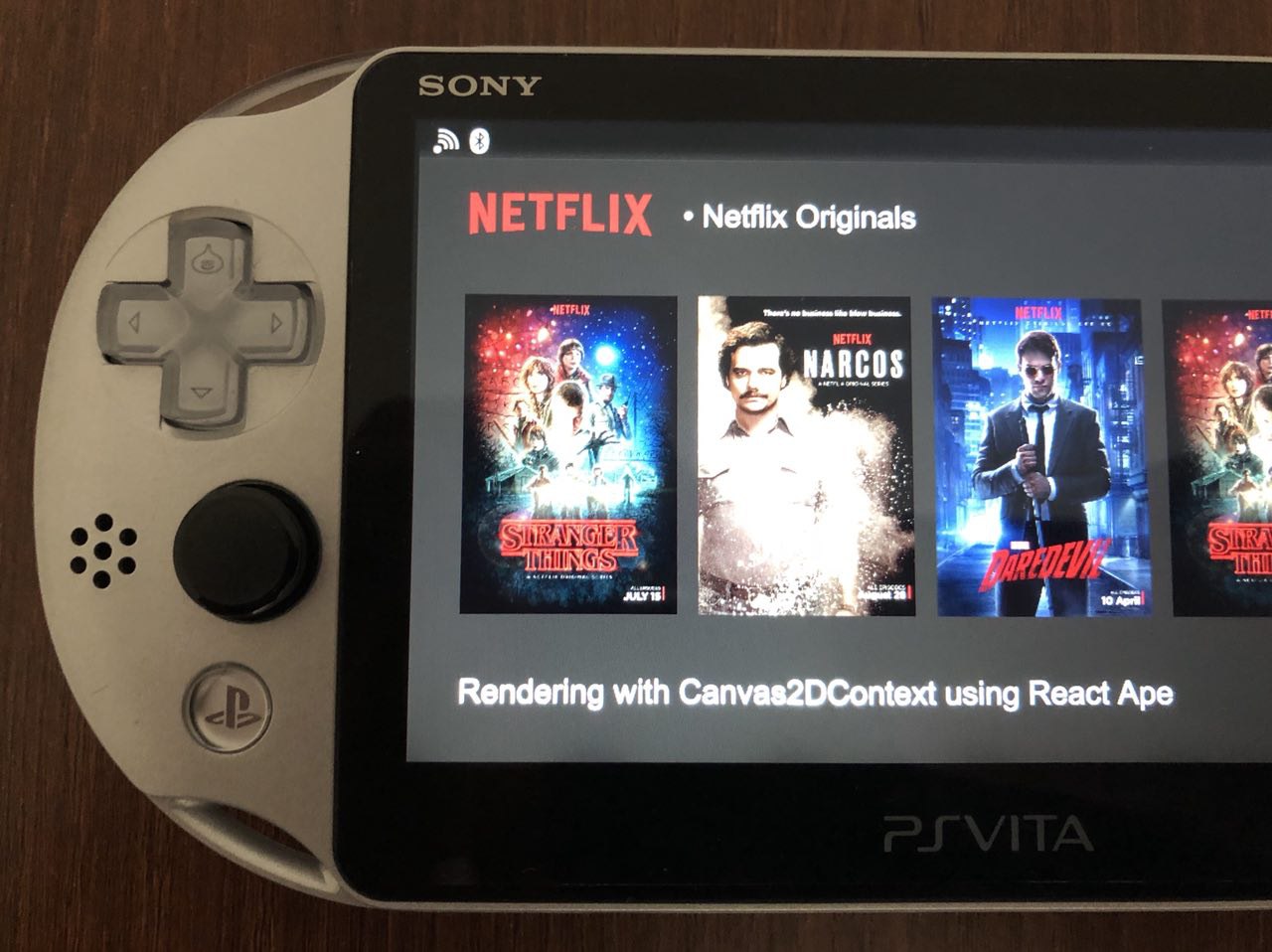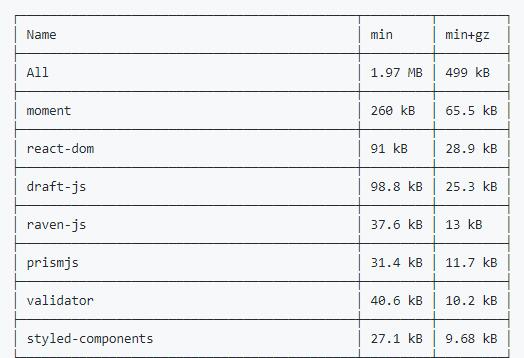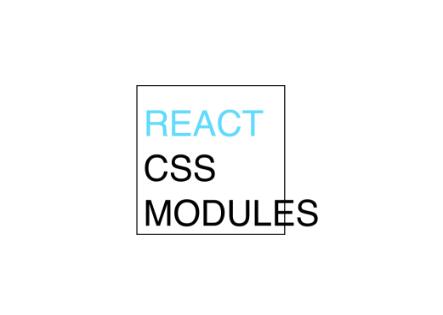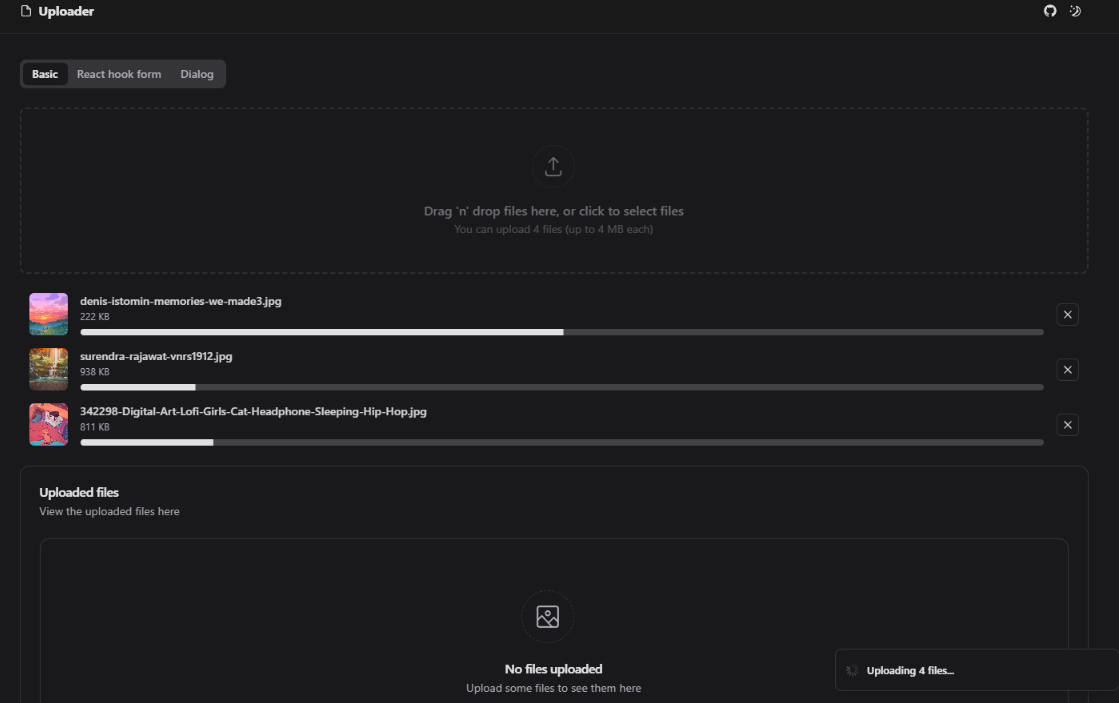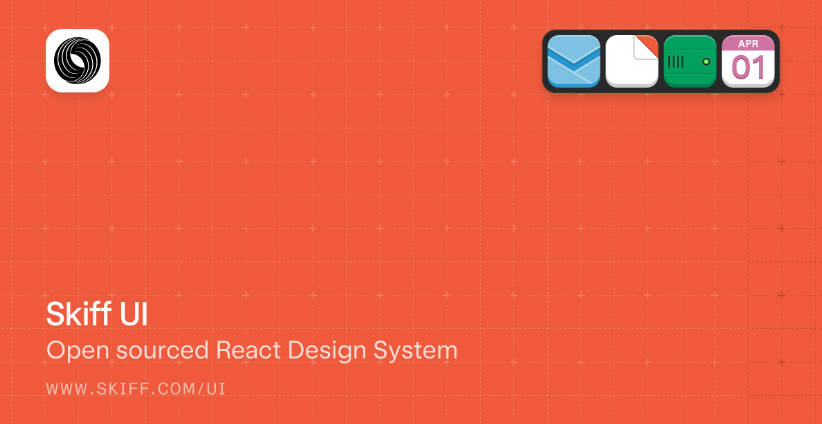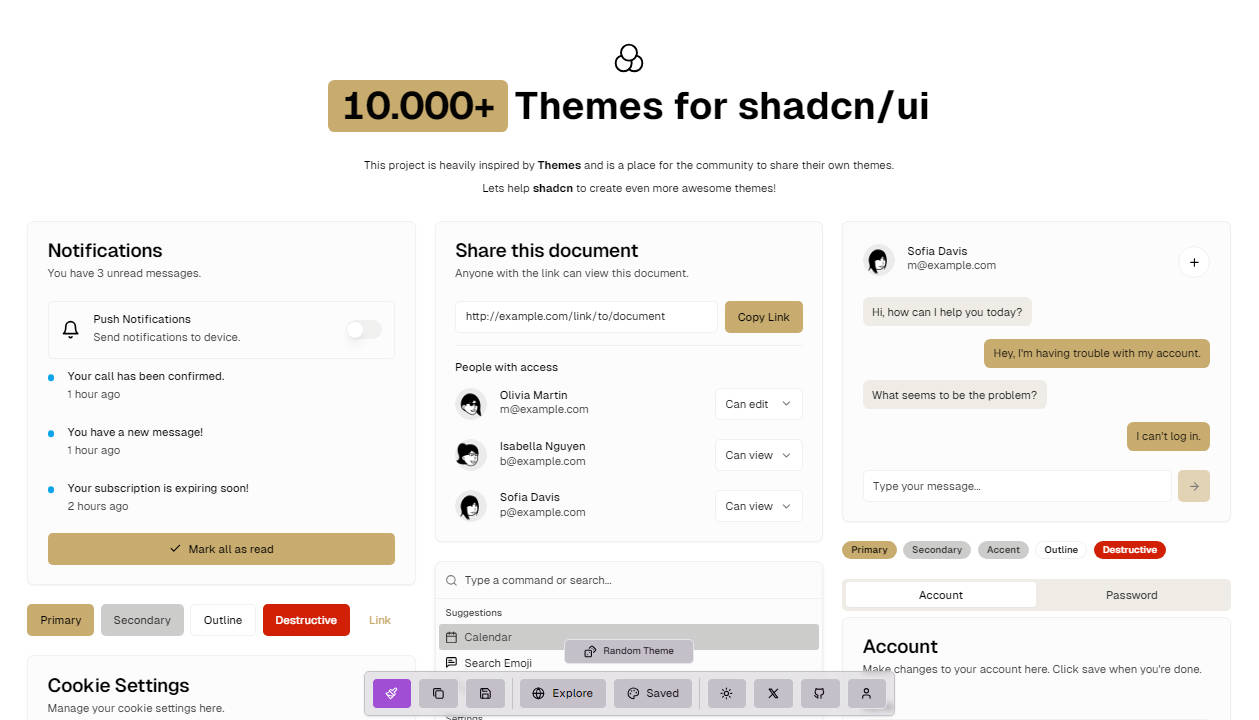React Ape
The name is a "joke" based on Netflix's React Gibbon. I choose to use Ape then.
React Renderer to build UI interfaces using canvas/WebGL. React Ape was built to be an optional React-TV renderer. It's mainly a renderer focused on creating things for TV, PS4, Nintendo Switch, PS Vita, PS3 and low memory devices.
Under Development
1 - React Ape IS NOT Ready Yet.
2 - Should follow React Native Elements and Primitives. So will be easy to convert React Components (without bridges) to Canvas/WebGL.
3 - Accept Style as JavaScript Object.
4 - Allow to create React Components based on Canvas.
5 - Allow to inspect React Elements using React DevTools.
6 - I confess there's a lot of ideas and sketches in my head and I'll update the Readme when things become more clear.
Usage
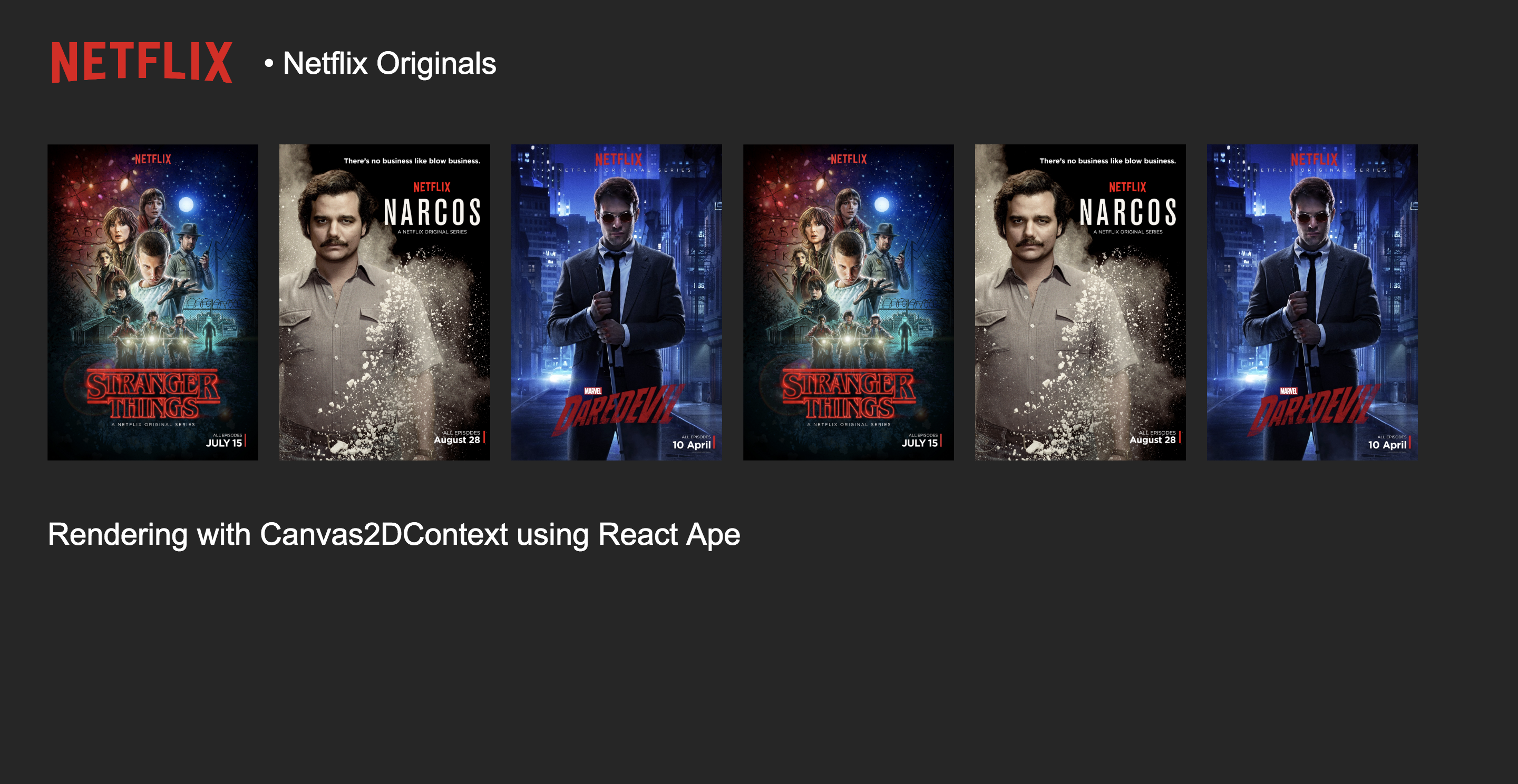
import React from 'react'
import { render, Text, ListView, View, Image, StyleSheet } from 'react-ape'
const styles = StyleSheet.create({
heading: {
top: 62,
left: 250,
color: 'white',
fontFamily: 'Arial',
fontWeight: 'bold',
fontSize: 29,
},
date: {
top: 62,
left: 1150,
color: 'red',
fontFamily: 'Arial',
fontWeight: 'bold',
fontSize: 19,
},
logo: {
top: 10,
left: 30,
},
infoAboutRenderer: {
top: 520,
left: 45,
fontFamily: 'Arial',
fontWeight: 'bold',
fontSize: 29,
}
})
class App extends React.Component {
constructor() {
super()
this.posters = [
{ name: 'Narcos', src: 'posters/narcos.jpg' },
{ name: 'Daredevil', src: 'posters/daredevil.jpg' },
{ name: 'Stranger Things', src: 'posters/stranger-things.jpg' },
]
this.state = {
date: new Date().toISOString()
}
}
componentDidMount() {
setInterval(() => this.setState({ date: new Date().toISOString() }), 1000)
}
renderPostersList() {
const renderRow = (data, idx) => (
<View key={idx} onClick={() => { console.log(data) }}>
<Image src={data.src} width={200} height={300}/>
<Text content={data.name}/>
</View>
)
return (
<ListView
dataSource={this.posters}
renderRow={renderRow}
/>
)
}
render() {
return (
<View>
<Image
src={'posters/netflix.png'}
style={styles.logo}
width={210}
height={100}
/>
<Text style={styles.heading}>
• Netflix Originals
</Text>
<Text style={styles.date}>
{this.state.date}
</Text>
<Text style={styles.infoAboutRenderer}>
Rendering with Canvas2DContext using React Ape
</Text>
{ this.renderPostersList() }
</View>
)
}
}
render(<App/>, document.getElementById('canvas-id'))
React Ape Components
React Ape provides a set of standard React components that abstract the underlying rendering implementation.
<View>
<ListView>
<Text>
Text is a flexible component that supports multi-line truncation, something which has historically been difficult and very expensive to do in DOM.
<Image>
Image is exactly what you think it is. However, it adds the ability to hide an image until it is fully loaded and optionally fade it in on load.
StyleSheet (WIP)
TODO:
flatten(https://facebook.github.io/react-native/docs/stylesheet.html#flatten)top, left, right, bottom- flexbox (display, justify-content, align-items)
dimensions (WIP)
https://facebook.github.io/react-native/docs/dimensions.html
Platform (WIP)
https://facebook.github.io/react-native/docs/platform-specific-code.html
Roadmap
Stage 1
Initial proof-of-concept.
- [ ]
Focus/Navigation - [ ] Smart clearRect based on
DiffProperties - [ ]
ListView - [ ]
View - [ ] Resize
- [ ] Allow switch to WebGL
- [ ] Support custom React Components which have access to ApeContext (
Canvas2DContextor WebGL Scene) - [ ] Start support to Events/Interaction!
- [ ] handleClick
- [ ] handleDoubleClick
- [ ] handleTouchStart
- [ ] handleTouchMove
- [ ] handleTouchEnd
- [ ] Drag and Drop
- [ ] Document explaing how React-Ape lifecycle works
